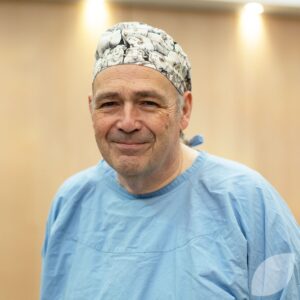Osteosarcoma is the most common type of bone cancera disease where abnormal cells split without control and spread to other nearby body tissue and/or organs that is usually found in the ends of long bones, such as the shin, femur (thigh bone) and humerus (upper arm bone). It is a type of sarcomacancer arising from bones and/or soft tissue, which is a cancer that develops from the cellsthe basic structural and functional unit of all living things in bone and/or soft tissuetissue/the material that joins, holds up or surrounds inside body parts such as fat, muscle, ligaments and lining around joints.
Osteosarcoma is more common in males, and is generally diagnosed in children, teens, and young adults. However, anyone can develop this disease.
Types of Osteosarcomas
There are three primary types of osteosarcomas, which are classified by how the cancer cells look under the microscope.
High-grade Osteosarcoma
High-grade osteosarcomas are the most common subtype of this disease and are the most aggressive. The cells analysed under the microscope do not look like normal bone, and many cancer cells are seen dividing into new cells. Some common types of high-grade osteosarcomas include:
- Osteoblastic.
- Chondroblastic.
- Fibroblastic.
- Small cell.
- Telangiectatic.
- Juxtacortical high-grade.
Intermediate-grade Osteosarcoma
Intermediate-grade osteosarcomas are uncommon and are often treated the same as low-grade osteosarcomas. These tumours are defined by being not as extensive as high-grade tumours, but more advancedat a late stage, far along than low-grade tumours. The most notable type of intermediate osteosarcoma is juxtacortical intermediate-grade osteosarcoma.
Low-grade Osteosarcoma
Low-grade osteosarcomas are the slowest growing subtype of osteosarcoma. The cells analysed under the microscope mostly resemble normal bone cells, with few replicating cancer cells observed. The most common types of low-grade osteosarcomas include:
- Juxtacortical low-grade.
- Intramedullary or intraosseous well differentiated (low-grade central).
Treatment
If an osteosarcoma is detected, it will be staged and graded based on size, metastasiswhen the cancer has spread to other parts of the body, also known as mets, and how the cancer cells look under the microscope. Stagingthe process of determining how big the cancer is, where it started and if it has spread to other areas and grading helps your doctors determine the best treatment for you.
Cancers can be staged using the TNM staging system:
- T (tumoura tissue mass that forms from groups of unhealthy cells) indicates the size and depth of the tumour.
- N (nodea small lump or mass of tissue in your body) indicates whether the cancer has spread to nearby lymph nodessmall bean-shaped structures that filters harmful substances from lymph fluid.
- M (metastasis) indicates whether the cancer has spread to other parts of the body.
This system can also be used in combination with a numerical value, from stage 0-IV:
- Stage 0: this stage describes cancer cells in the place of origin (or ‘in situ’) that have not spread to nearby tissuea group of cells that work together to perform a function.
- Stage I: cancer cells have begun to spread to nearby tissue. It is not deeply embedded into nearby tissue and had not spread to lymph nodes. This stage is also known as early-stage cancer.
- Stage II: cancer cells have grown deeper into nearby tissue. Lymph nodes may or may not be affected. This is also known as localisedaffecting only one area of body cancer.
- Stage III: the cancer has become larger and has grown deeper into nearby tissue. Lymph nodes are generally affected at this stage. This is also known as localised cancer.
- Stage IV: the cancer has spread to other tissues and organs in the body. This is also known as advanced or metastatic cancer.
Cancers can also be graded based on the rate of growth and how likely they are to spread:
- Gradea description of how abnormal cancer cells and tissue look under a microscope when compared to healthy cells I: cancer cells present as slightly abnormal and are usually slow growing. This is also known as a low-grade tumour.
- Grade II: cancer cells present as abnormal and grow faster than grade-I tumours. This is also known as an intermediate-grade tumour.
- Grade III: cancer cells present as very abnormal and grow quickly. This is also known as a high-grade tumour.
Once your tumour has been staged and graded, your doctor may recommend genetic testinga procedure that analyses DNA to identify changes in genes, chromosomes and proteins, which can be used to analyse tumour DNA to help determine which treatment has the greatest chance of success, which analyses your tumour DNA and can help determine which treatment has the greatest chance of success. They will then discuss the most appropriate treatment option for you.
Treatment is dependent on several factors, including location, stage of disease and overall health.
Treatment options for osteosarcoma may include:
- Surgerytreatment involving removal of cancerous tissue and/or tumours and a margin of healthy tissue around it to reduce recurrence, potentially including:
- Limb-sparing surgerysurgery to remove the cancer only and salvage the affected limb.
- Amputationcomplete or partial removal of a limb.
- Rotationplastya limb-salvage surgery used to treat tumours of or around the knee; the knee and a portion of the thigh are removed, and the lower leg is rotated 180 degrees and reattached. The ankle joint will function as the new knee and a prosthetic leg will act as the lower leg (for osteosarcomas of the knee).
- Bone grafta surgical procedure that uses bone tissue from another bone in the body or from another person to repair or rebuild damaged or diseased bones..
- Chemotherapya cancer treatment that uses drugs to kill or slow the growth of cancer cells, while minimising damage to healthy cells.
- Radiation therapya treatment that uses controlled doses of radiation to damage or kill cancer cells.
- Clinical trialsresearch studies performed to test new treatments, tests or procedures and evaluate their effectiveness on various diseases.
- Palliative carea variety of practices and exercises used to provide pain relief and improve quality of life without curing the disease.
Risk factors
While the cause of osteosarcomas remain unknown, the following factors may increase your riskthe possibility that something bad will happen of developing the disease:
- Teenage growth spurts.
- Being tall for specific age.
- Previous radiation treatment.
- Certain bone diseases, such as:
- Paget disease of the bone.
- Hereditary multiple osteochondromas.
- Fibrous dysplasiathe presence of abnormal cells in a tissue or organ.
- Inherited disorders, such as:
- Li-Fraumeni syndrome.
- Rothmund-Thompson syndrome.
- Hereditary retinoblastoma.
- Bloom syndrome.
- Werner syndrome.
- Diamond-Blackfan anaemiaa condition where there aren't enough red blood cells in the blood, causing fatigue, weakness and pale skin and affecting how the body responds to infection.
Not everyone with these risk factors will develop the disease, and some people who have the disease may have none of these risk factors. See your general practitioner (GP) if you are concerned.
Symptoms
The symptoms of osteosarcoma may include:
- Pain in affected bone.
- Swelling in affected area.
- Easily broken bones.
- Increased pain with movement, activity or lifting.
- Decreased movement of affected limb.
Not everyone with the symptoms above will have cancer, but see your general practitioner (GP) if you are concerned.
Diagnosis
If your doctor suspects you have an osteosarcoma, they may order the following tests to confirm the diagnosisthe process of identifying a disease based on signs and symptoms, patient history and medical test results and refer you to a specialist for treatment:
- Physical examinationan examination of your current symptoms, affected area(s) and overall medical history.
- Imagingtests that create detailed images of areas inside the body tests, potentially including:
- X-raya type of medical imaging that uses x-ray beams to create detailed images of the body .
- MRI (magnetic resonance imaging)a type of medical imaging that uses radiowaves, a strong magnet and computer technology to create detailed images of the body.
- CT (computed tomography) scana type of medical imaging that uses x-rays and computer technology to create detailed images of the body.
- PET (positron emission tomography) scana type of medical imaging that uses radioactive tracers to create detailed images of the body.
- Bone scana type of medical imaging that uses a radioactive tracer to detect bone conditions or abnormalities.
- Blood teststesting done to measure the levels of certain substances in the blood.
- Biopsyremoval of a section of tissue to analyse for cancer cells.







